Where Is Nepal? Discover the Himalayan’s Location and Attractions
26 Jul 2025 Bishal Rijal
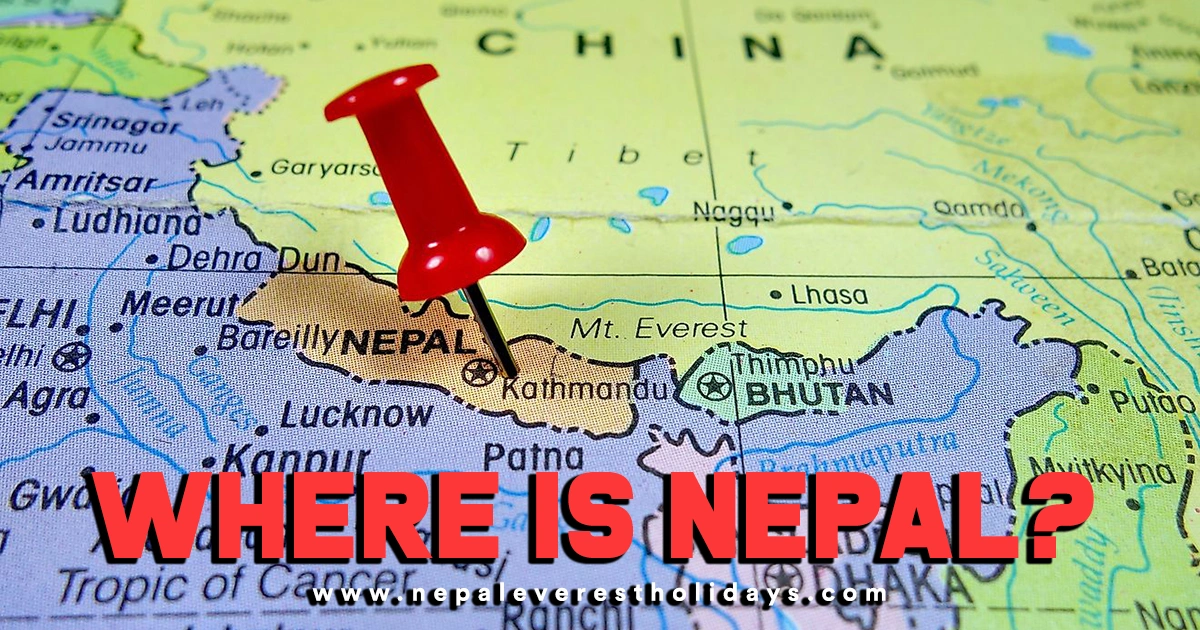
Ever wondered “Where is Nepal?” or “Nepal, where exactly is it?” This small yet fascinating country is nestled in South Asia, right in the heart of the Himalayas. In fact, Nepal is a landlocked nation bounded by India on three sides (south, east, and west) and by China (Tibet) to the north. It stretches roughly 850 km east–west and about 200 km north–south. Nepal sits at latitudes 26°–31° N and longitudes 80°–89° E, with terrain ranging from tropical lowlands in the south to alpine peaks in the north. This unique location means Nepal is “where” some of the world’s greatest adventures begin – from the soaring snowcapped Himalayas to lush jungle plains.
Nepal’s Location in South Asia
For those typing queries like “Nepal where”, “where Nepal”, “where is Nepal country” or even “where is Nepal the country”, the answer is on the map of South Asia. Nepal is part of the Indian subcontinent, sandwiched between two giant neighbors. To the north, the Himalayan range forms the border with Tibet (China), and to the south, east, and west, it is flanked by India. Kathmandu, Nepal’s capital, sits at about 1,400 m elevation in a central valley. The country covers about 147,000 km² (roughly the size of Greece).
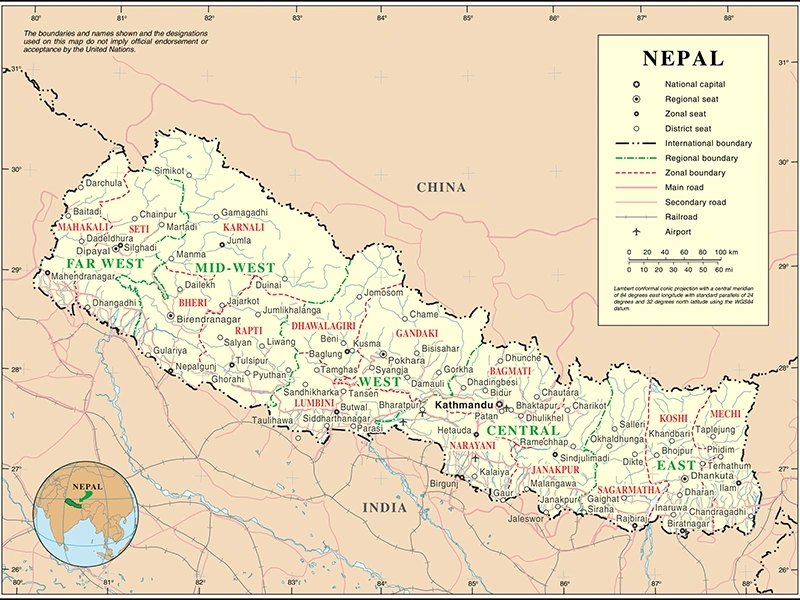
Geography at a Glance: Nepal’s rugged topography rises from under 200 m in the Terai plains up to 8,848 m at Mount Everest. This dramatic change makes Nepal “where” tropical and alpine climates meet.
Because Nepal is landlocked, there is no coastline; instead, it’s a land of towering mountains and fertile valleys. Its location – “where Nepal lies” – means you’ll experience ancient culture in the cool Kathmandu Valley and wild river gorges leading down to jungle parks in the south. Nepal even ranks among the world’s top 10 travel destinations because of its breathtaking landscapes and cultural heritage.
Between Giants: India and China
So, “Where is Nepal on the map of Asia?” It’s the small wedge between India and China. Nepal shares about 2,400 km of border: China (Tibet) to the north, and India wrapping around the rest. India’s states of Uttarakhand, Uttar Pradesh, Bihar, West Bengal, and Sikkim lie to Nepal’s south and east. The mighty Himalayan peaks form the natural frontier with Tibet. This location means you can often see Chinese and Indian influences in Nepali culture and cuisine. It also makes Nepal very accessible: many international travelers fly into Kathmandu (with frequent flights from India and beyond).
Where’s Nepal? When people ask “where’s Nepal?” or “where is the country of Nepal?”, remember that Nepal is not far from major Asian hubs. It’s just north of New Delhi (India) and southwest of Lhasa (Tibet), straddling the famous Himalayan range.
The Himalayas and Mount Everest
Nepal’s geography is dominated by the Himalayas. Eight of the world’s ten highest peaks rise within Nepal’s borders, including Mount Everest at 8,848 m. This makes Nepal “where” the highest point on Earth stands. Trekkers and climbers from around the globe flock here because, as one blog puts it, “Nepal is one of the best destinations in the world for trekking”. The Everest Base Camp Trek in the Khumbu region is world-famous, and nearly every year thousands of adventurers hike there dreaming of seeing Everest’s summit up close.
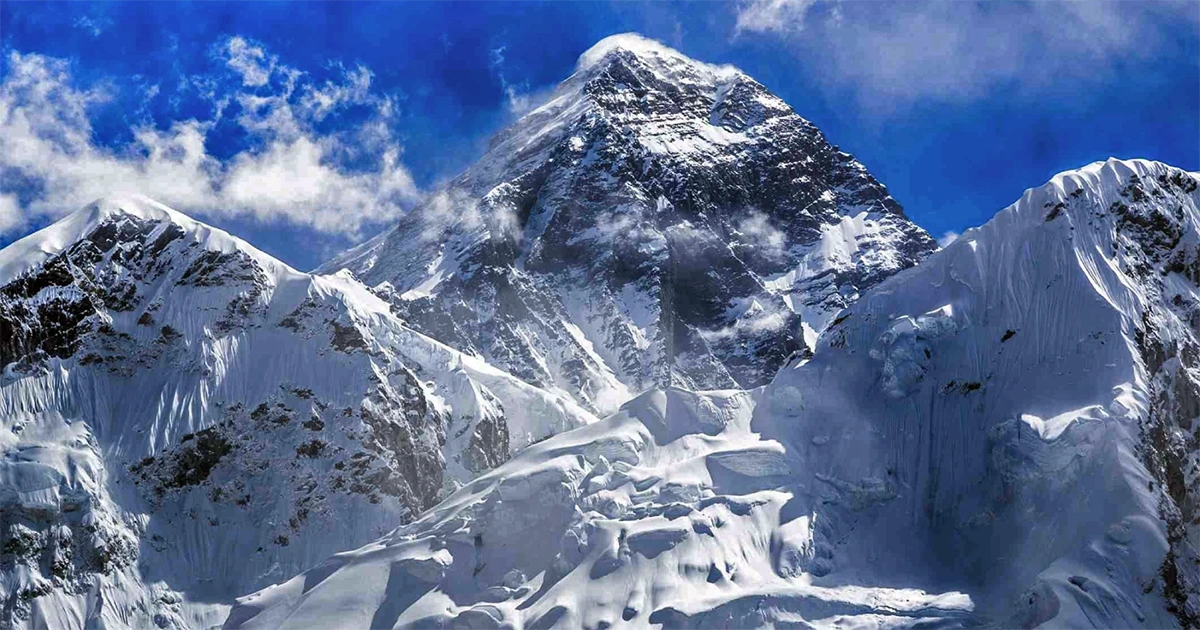
Other giants – Kanchenjunga, Lhotse, Makalu, Cho Oyu, Dhaulagiri, Manaslu, Annapurna and others – also reside in Nepal. If your search history looks like “where is Nepal the country?”, this is the answer: Nepal is where the Himalayas soar. It’s a mountain playground. You’ll see jagged peaks, hanging glaciers, and alpine forests as you travel through the country.
Key Cities and Cultural Highlights
Nepal’s capital, Kathmandu, is often the first stop for visitors. Sitting in a valley at 1,400 m, Kathmandu is rich with history and culture. Its ancient temples, stupas and palaces (a quarter of Nepal’s UNESCO World Heritage Sites are here) make it a cultural treasure. Wander through Kathmandu’s bustling bazaars, try Newari cuisine, and visit holy sites like Pashupatinath Temple and the Swayambhunath “Monkey” Stupa. The city’s historic Durbar Squares (old royal plazas) are filled with carved pagodas and cobblestone courtyards – proof that this “country where Nepal’s heart beats” has thrilled explorers for centuries.
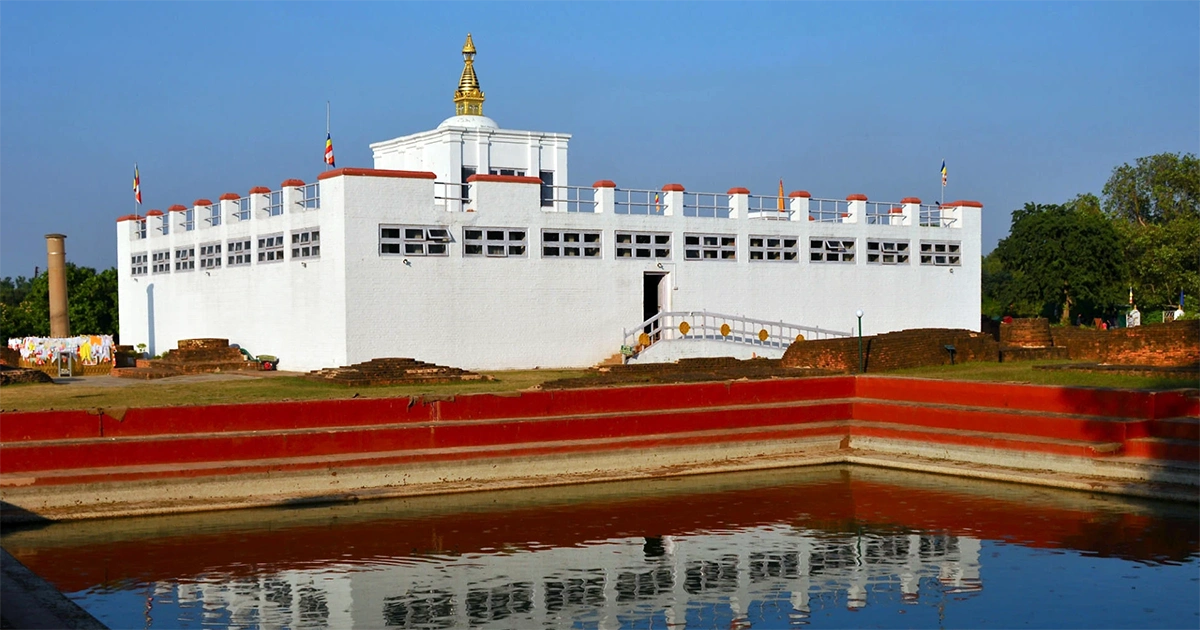
Pokhara is Nepal’s other must-see city. Nestled beside the serene Phewa Lake with the Annapurna range in the background, Pokhara is famed as the “lake city” of Nepal. It offers spectacular mountain views plus adventure sports: paragliding above the lake, white-water rafting on the Trishuli River, or boating under the Peace Pagodanepaleverestholidays.com. Pokhara is where travelers relax and enjoy panoramas of peaks like Fishtail (Machhapuchhre).
Further out, Lumbini in the south is where Buddhism began. This peaceful pilgrimage town is the birthplace of Lord Buddha. Its sacred gardens and monasteries draw pilgrims worldwide – an important cultural landmark for a country so proud of its spiritual heritage.
(Nepal is where… Kathmandu’s ancient traditions and Pokhara’s mountain adventures seamlessly combine with the living history of Lumbini.)
Nature and Wildlife: Jungles to Lakes
Nepal’s variety is staggering. From the high Himalayas you descend into forested hills and eventually reach the Terai jungles of the south. Chitwan National Park and Bardiya National Park are world-famous wildlife reserves.In these wild lowlands – still technically “where” Nepal is on the map – you can spot Asian elephants, Bengal tigers, one-horned rhinoceroses and sloth bears living freely. Chitwan, for example, provides a sanctuary for rhinos and tigers and over 500 species of birds. A jungle safari here is like stepping into a National Geographic scene.
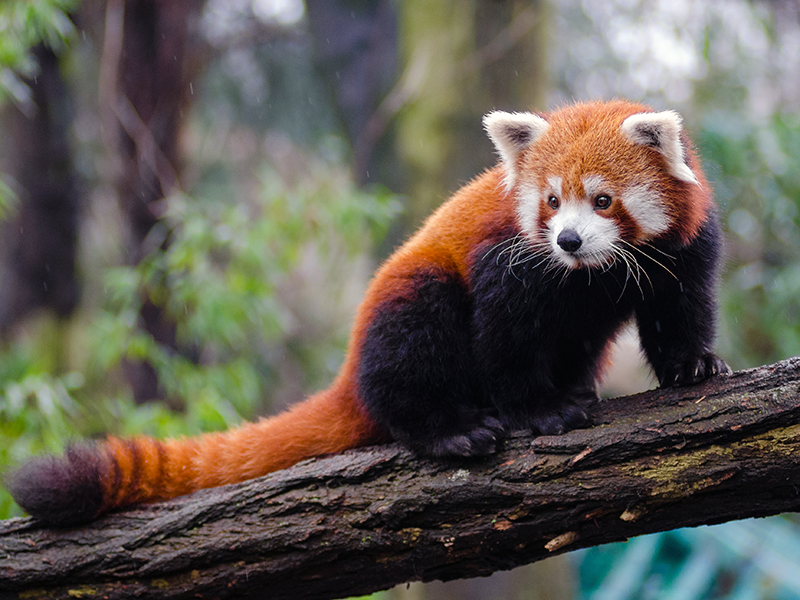
On the way from jungle to sky, you’ll pass terraced farmlands and alpine valleys. Rolling green hills and lakes such as Begnas and Rara show that Nepal is also where scenic beauty abounds beyond the mountains. For example, Pokhara’s Phewa Lake is ringed by forests and lodgesnepaleverestholidays.com. Here the snow peaks mirror on calm waters. Trekking routes like the Annapurna Circuit also include subtropical forests and clear mountain lakes – again, proof that “Nepal is where adventure meets nature.”
Top Attractions in Nepal
To sum up the highlights (which answer queries like “where is Nepal the country in terms of attractions?”), here are key reasons travelers love Nepal:
- Everest Base Camp and the Himalayas: Nepal is where you can trek among the world’s tallest peaks (Everest, Annapurna, Manaslu, and more). The Everest Base Camp trek and other Himalayan expeditions offer once-in-a-lifetime views and experiences.
- Kathmandu Valley Heritage: Nepal is where ancient history lives on – Kathmandu has medieval palaces, temples and UNESCO sites to explore. Festivals like Dashain and Tihar also showcase Nepal’s rich Hindu and Buddhist culture.
- Chitwan & Bardiya Jungles: Nepal is where wild tigers, rhinos and elephants roam. Jungle safaris in Chitwan or Bardiya National Parks bring you face-to-face with this incredible wildlife.
- Pokhara and Adventure Sports: Nepal is where you can paraglide over lakes, raft roaring rivers, or hike a few hours to panoramic viewpoints. Pokhara is famous for boating on Phewa Lake and tandem paragliding with Annapurna views.
- Lumbini, Birthplace of Buddha: Nepal is where spiritual seekers go – to Lumbini’s sacred gardens and monasteries, the birthplace of the Buddha. This pilgrimage site is peaceful yet historically profound.
Each of these shows why Nepal remains one of Asia’s most popular travel destinationsnepaleverestholidays.com.
Planning Your Visit
Nepal is where convenience meets adventure. Most travelers fly into Kathmandu, and from there you can book domestic flights or overland transfers to anywhere else in the country. The country uses the Nepali rupee (NPR) and Nepali is the official language, but English is commonly spoken in tourist areas. Visitors from many countries can get a visa on arrival in Kathmandu.
Best time to visit: October–November and March–May are ideal, with clear skies and pleasant weather for trekking and sightseeing. Remember that in winter (Dec-Feb) the mountains are colder and in monsoon (June-Sep) the southern plains get very wet.
Whether you’re dreaming of scaling peaks, exploring temples, or encountering wildlife, Nepal is where the adventure happens. Its location high in the Himalayas gives it both dramatic scenery and a vibrant cultural tapestry. From the moment you ask “Where is Nepal?” and learn it lies at this crossroads of nature and tradition, you’ll see why travelers return again and again.
Conclusion
So, if you’ve been Googling “where’s Nepal?” or “where is Nepal the country?”, the answer is clear: in the heart of South Asia’s Himalayas, wedged between India and China. Nepal is a land of towering peaks, ancient cities, lush jungles, and warm-hearted people. Its capital Kathmandu pulses with culture, Pokhara shines with mountain vistas, and its national parks are alive with wildlife. In short, Nepal is where adventure meets tradition.
Ready to plan your trip to this amazing country? Visit Nepal Everest Holidays to explore our Nepal tours and itineraries. Our local experts can help design your perfect Nepal adventure. Whether it’s a trek to Everest Base Camp, a cultural tour of Kathmandu valley, or a jungle safari in Chitwan. Contact Nepal Everest Holidays today and step into the wonder of Nepal!
